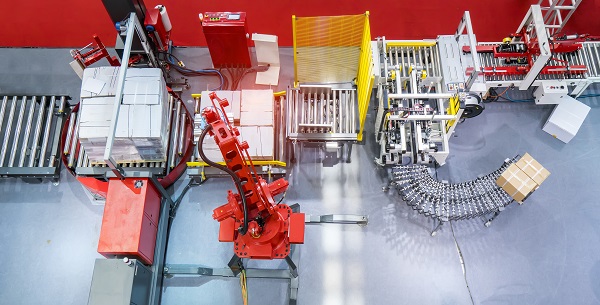Upgrading Automation In The Post Pandemic Era
Automation can build dependability in every aspect of manufacturing and distribution

Each day brings new challenges and new considerations for warehousing, distribution and manufacturing operations in the age of Covid-19. One of the chief aspects of this “new normal” is the human element in your business. It’s shut down some operations, and crimped many others. For certain industries, demand has skyrocketed.
Automated solutions have the ability to help you weather the storm — or prepare for the next wave.
What types of automation will help?
If you’re thinking about what type of automated solution could help you work better when labor is in short supply, you must assess your needs. Do you need to fulfill orders faster? Pick more accurately? Eliminate errors? Reduce human interactions in your facility? All of the above?
Key automation components
After assessing your facilities’ current situation, you’ll want to look at the options available for you to implement. Here are just a few to consider:
Robotics – An obvious choice, but one that can considerably help you produce in spite of a lack of human worker options in any scenario. Robots work day and night and can adapt to more situations than they could even five years ago.
– An obvious choice, but one that can considerably help you produce in spite of a lack of human worker options in any scenario. Robots work day and night and can adapt to more situations than they could even five years ago.
Make sure your process can handle the inclusion of robotics, and gauge just how much help you will need. The initial investment can seem steep, but in relation to what we are just starting to experience during this relatively new public health crisis, your savings can start to accumulate very soon.
Storage – Automation offers flexibility when it comes to storage. Solutions such as an AS/RS automated system increase productivity and reduce costs with effective inventory storage and accurate reporting. These systems work with all aspects of product and pallet storage, so you can enjoy efficient storage and retrieval that might be currently lacking. Another system to consider is an industrial carousel, a technology that increases storage density while reducing labor costs and improving the coveted throughput.
Picking – Don’t sleep on how adding picking automation or robotics can help your operations improve multiple facets of its performance, all while saving on the expense of using an employee to cover the same tasks. People are relatively slow when compared to the kind of speed and precision a robotic picking system can offer. When you take a component from point A to point B, over-and-over, and the motion is within a similar range, robotic pickers gain a tremendous advantage over manual solutions.
Smaller solutions
While the three automated products presented above have the potential to change your operations for the better, there are smaller options to try out and see if they can improve your current situation. Items such as automated stretch wrappers can provide a simple yet effective method of increasing productivity.
Of course, in these ever-changing times, while we want to provide you with options, we don’t want you to think we’re advocating the release of any workers in your facility. We understand the need to keep effective employees on hand as there are certain tasks that automation cannot fix yet. A collaborative environment is a great one that offers the best of both worlds.
When a situation such as the Covid-19 virus emerges, you want your operations to keep pace with the demand (especially if you’re an essential business). Some instances such as this current one mean you can’t rely on your human workforce, because you must protect them. When that happens, having automated systems to pick up the slack is imperative to keeping the facility moving.
More Resources
Evan Fleishacker



